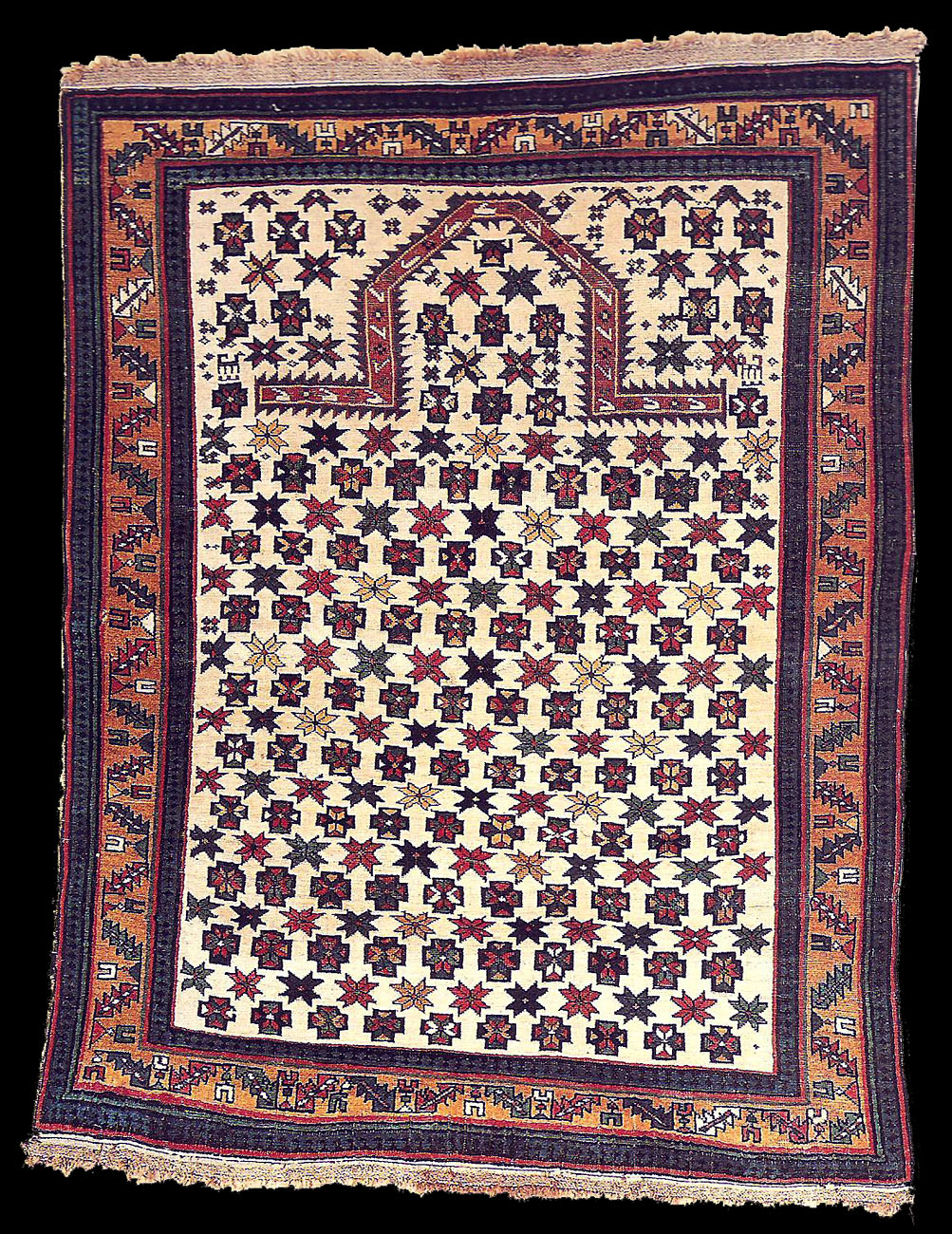|
The design of this rug is simple but charming, with a rustic and homespun
feel to it. It is indeed surprising that such a design is not encountered
more often. According to its Lefevre catalogue entry, the rug has 'a dense
pile, in wool of excellent quality. It is in very good condition with
original selvedges and braided ends. It is free of repair, except for a few
sections of selvedges which have been rebound.' After the West 'discovered'
Caucasian rugs around 1875, a thriving cottage industry developed to supply
the export market. Most of these rugs followed predictable patterns and
adhered to safe, popular designs. This rug, however, does not follow any of
these established styles and it is likely that it would have been made for
personal use or for local trade. Most rugs of this type would wear out
without ever leaving home, and it has been estimated that the average
lifespan of such a rug was around 30 years.
published Ralph Kaffel's Caucasian Prayer Rugs, plate 63
lit: published Ralph Kaffel's Caucasian Prayer Rugs, plate 63
 |

